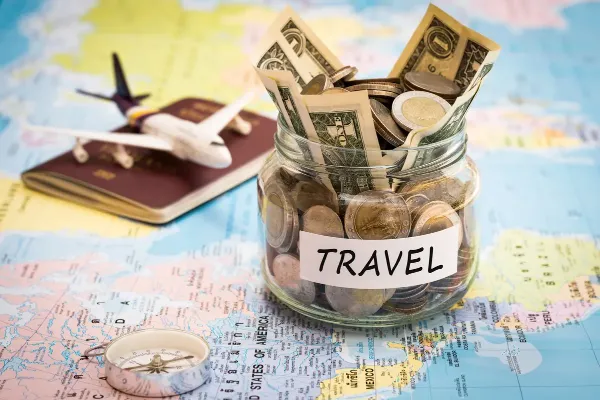Your essential guide to visiting Japan from Australia
Get ready for Japan: key travel tips on planning, proper etiquette, and exchanging money before your flight.

Table of contents:
Japan is a captivating destination filled with contrasts – from ultra-modern cities to tranquil temples and centuries-old traditions. If you're planning a trip from Australia, this guide to visiting Japan will help you prepare with practical Japan trip tips and must-know travel advice.
Know before you go
Before flying to Japan, research the best times to visit, visa requirements for Australian travellers, and local customs.
Things to know before going to Japan include tipping (not customary), bowing as a sign of respect, and removing shoes when entering homes or certain restaurants.
- Best time to visit: Spring (March–May) for cherry blossoms and autumn (September–November) for fall foliage offer mild weather and vibrant scenery. Shoulder seasons (June and late September) see fewer crowds and lower rates.
- Visa requirements: Australians enjoy visa-free entry for up to 90 days for tourism—just ensure your passport is valid for at least six months beyond your travel dates.ç
- Travel insurance: Comprehensive coverage is essential—look for plans including medical, theft, and trip cancellation.
- Health and safety: Japan has excellent healthcare; bring prescription medicines in original packaging and carry a translated prescription if possible.
- Climate packing: Pack layers—light jackets for spring/autumn; rain gear for the rainy season (June); warm clothing for winter (December–February).
Plan your itinerary
Whether you're exploring Tokyo’s neon-lit streets, Kyoto’s shrines, or Hokkaido’s nature, build a flexible itinerary that balances urban and cultural experiences.
Include travel time between cities and check whether a Japan Rail Pass suits your trip.
Sample 7‑day itinerary:
-
Days 1–3: Tokyo (Asakusa, Shibuya Crossing, Tsukiji Outer Market, day trip to Nikko
-
Days 4–5: Kyoto (Fushimi Inari Shrine, Gion district, Arashiyama Bamboo Grove)
-
Day 6: Nara (Todai‑ji Temple, Nara Park)
-
Day 7: Osaka (Dotonbori, Osaka Castle), then return to Tokyo
Transport: Consider the Japan Rail Pass (7‑, 14‑, 21‑day) for unlimited travel on JR lines nationwide. Reserve seat tickets online before departure and exchange your voucher at Narita/Haneda or major stations.
Regional passes: For focused travel—like the Kansai Area Pass or JR East Pass—regional rail passes can offer better savings for shorter distances.
Book essentials in advance
Accommodation, regional train tickets, and certain activities (like sumo tournaments or tea ceremonies) often sell out, especially during peak seasons. Book them early for peace of mind.
- JR Pass: Purchase online through authorised vendors at least one week before departure; exchange the voucher for your pass at major airports or train stations.
- Suica/Pasmo IC card: Pre‑order a Welcome Suica to pick up at Narita or Haneda, or grab a card at station kiosks. Initial deposit ¥500; top up easily at convenience stores.
- Pocket Wi‑Fi & eSIM: Reserve a portable Wi‑Fi hotspot or eSIM plan for unlimited data.
- Attraction tickets: Book tickets for teamLab Borderless, Ghibli Museum, tea ceremonies, and other experiences online well in advance.
Currency and payments
Japan is still very much a cash-based society. While credit and debit cards are accepted in cities and larger businesses, smaller establishments – especially in rural areas – may only accept cash. It’s essential to carry Japanese Yen with you.
Japan vacation tip: Get ready for an unforgettable trip by planning your expenses in Yen ahead of time. Reserve your Japanese currency online at Prosegur Change and pick it up at the airport before flying out of Australia. With 0% commission and great rates, it’s one of the best ways to prepare financially for your Japan trip.
- Exchange rates. Monitor live AUD–JPY rates and lock in your amount via Prosegur Change’s online platform with 0% commission.
- Budget guide (per person, per day): Accommodation: ¥8,000–20,000 (A$85–210), Meals: ¥1,000–3,000 (A$10–30), Local transport: ¥1,000–2,000 (A$10–20) and Sightseeing: ¥2,000–5,000 (A$20–50).
Language & etiquette tips
Learning a few basic Japanese phrases goes a long way in showing respect and blending in.
- Polite phrases: Arigatō gozaimasu (thank you), sumimasen (excuse me), onegai shimasu (please) or gomen nasai (I’m sorry).
- Bowing: A slight bow for casual greetings; a deeper bow for formal situations.
- Shoes off: Remove footwear when entering homes, ryokan, temples with tatami, and traditional restaurants—slip on the provided slippers.
- Onsen etiquette: Wash thoroughly before entering communal baths; no swimsuits; long hair tied up; tattoos may be restricted (use cover‑up stickers if needed).
- Queueing & conduct. Line up neatly for trains, cashiers, and attractions; avoid loud phone calls on public transport.
Start your Japan adventure with peace of mind by taking care of your travel money early. Reserve your Yen online, pick it up before your flight, and dive into an enriching experience across the Land of the Rising Sun.
-
How to plan a couples’ holiday in Bali without overspending
October 17, 2025
-
Indonesia travel money guide for australian couples
October 17, 2025
-
How inflation in Thailand affects Aussie travellers’ budgets
October 2, 2025





